Metabolic syndrome: Why food and movement beats drugs
Metabolic syndrome is a cluster of all the typical “bad” disease indicators that we used to only hear about individually from our doctor. You know: high blood pressure, high triglycerides, obesity, etc. It used to be that we’d take a look at each one of these things with our doctor in turn, and then determine which ones were “bad” or “ok”. Times have changed. We now know that these factors are related and tend to present together due to how the sugars in our foods impact our bodies.
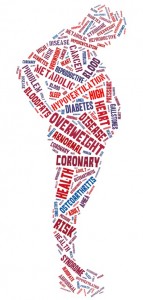 The prevalence of metabolic syndrome in the US is ridiculously high. It impacts more than one-third of all people in the US (including those in their twenties), and almost 50% of people over 60 have metabolic syndrome.
The prevalence of metabolic syndrome in the US is ridiculously high. It impacts more than one-third of all people in the US (including those in their twenties), and almost 50% of people over 60 have metabolic syndrome.
Your risk for heart disease, diabetes, and stroke increases with the number of metabolic risk factors you have (see below). The term “metabolic” refers to the biochemical processes involved in the body’s normal functioning. Refined sugar and flours negatively impact our metabolism as does a lack of physical activity. Often what happens when our metabolism isn’t working well is we gain some weight. The extra fat is also metabolically active (fat is not inert or harmless as we once thought) and a negative metabolic spiral begins.
Fortunately, this spiral can be stopped through a healthy lifestyle intervention. For most people, it’s best not to use pharmaceutical drugs to address the root cause of this dangerous syndrome (even if they have type 2 diabetes). A functional medicine doctor is the best type of doctor to assist you if you are looking to make these changes under professional supervision.
What is metabolic syndrome?
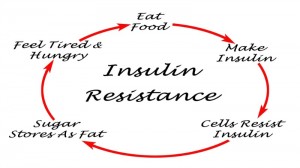 There are many names that are used interchangeably for the problems associated with metabolic syndrome including insulin resistance, syndrome X, obesity, pre-diabetes, adult-onset diabetes, and type 2 diabetes. According to the National Institute of Health, you have metabolic syndrome when you have at least three of the five conditions considered to be “metabolic risk factors.”
There are many names that are used interchangeably for the problems associated with metabolic syndrome including insulin resistance, syndrome X, obesity, pre-diabetes, adult-onset diabetes, and type 2 diabetes. According to the National Institute of Health, you have metabolic syndrome when you have at least three of the five conditions considered to be “metabolic risk factors.”
Check to see if you have 3 of these five metabolic syndrome conditions:
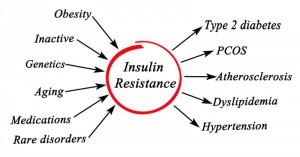 A large waistline (excess body fat around your waist: a waist measurement of 40 inches or more for men and 35 inches or more for women)
A large waistline (excess body fat around your waist: a waist measurement of 40 inches or more for men and 35 inches or more for women)- High blood pressure (130/85 or above or taking medication for elevated blood pressure levels)
- A high level of triglycerides (triglyceride levels of 150 milligrams per deciliter (mg/dL) or above, or taking medication for elevated triglyceride levels)
- A low level of “good” HDL cholesterol (below 40 mg/dL for men and below 50 mg/dL for women, or those taking medication for low HDL levels)
- A high level of blood sugar after fasting (fasting blood glucose levels of 100 mg/dL or above, or taking medication for elevated blood glucose)
It’s number 5 above, the high level of blood sugar, that is one of the underlying key drivers of metabolic syndrome
Metabolic syndrome is created by an increasing insulin resistance in our body. The Harvard School of Public Health has a good explanation for how we often lose our ability to process carbohydrates and sugars as we age. If we continue to give our body too much sugar or carbohydrates, it can no longer process these sugars well. When this happens, both sugar and insulin will linger longer in our bloodstream. Having sugar around in our bloodstream rapidly ages us and causes our body to begin deteriorating. Insulin resistance is often accompanied by increasing central obesity, fatigue after meals, sugar cravings, high triglycerides, low HDL, high blood pressure, problems with blood clotting, and increased inflammation. Note that you only need to have 3 of these conditions to have metabolic syndrome.
Get this test done to detect metabolic syndrome as early as possible
Dr Mark Hyman, a leader in functional medicine, notes that “Insulin resistance contributes to most chronic disease in America, a country with world-renowned health care, yet 90 percent of people who have this condition have not been diagnosed.” He recommends getting a two-hour glucose tolerance test (instead of the typical fasting glucose test) to help detect high insulin levels in the blood years earlier than via the usual fasting glucose tests. Catching this problem early is the key to not allowing your body to spiral downwards into a fast aging and deterioration process.
Metabolic syndrome is very dangerous even if you take drugs to suppress the symptoms
When the risk factors above occur together, they dramatically increase your risk of heart disease, stroke and diabetes. Even if you are taking drugs for one or more of the five conditions above, you still need to address the underlying cause of your metabolic syndrome.
Drugs generally suppress symptoms. They are not designed to cure disease. Suppressing symptoms with drugs without addressing the underlying root causes for disease is similar to painting over a rotting house foundation. We would never do it with our house, and we should not do it with our bodies. We need to address the root cause of our disease, otherwise, we are choosing to allow our bodies to age and decline dramatically faster that is desirable or necessary.
Metabolic syndrome can be cured with food and movement
For the vast majority of people, insulin resistance, metabolic syndrome and diabetes can be prevented and reversed through lifestyle changes. I found it incredible when I first learned this. You can reverse major diseases like Diabetes 2, heart diseases, and even some cancers with changes in diet and lifestyle. The key is actually making these changes. If you have metabolic syndrome or any of its components, daily lifestyle changes can delay or even prevent the development of serious health problems.
Dr Hyman advises these 8 steps to counterbalance metabolic syndrome: Eat whole fresh foods (all the healthy recipes on this blog are created to help reverse disease), control inflammation, remove all sweeteners, increase fiber-rich foods, get enough sleep, address nutrient deficiencies, incorporate the right exercises and control your stress levels.
We know that the risk of having metabolic syndrome is closely linked to obesity and a lack of physical activity. These things are within our control. The best way to address the underlying cause of metabolic syndrome is to alter the foods you eat, increase your activity levels, and avoid taking prescription drugs which come with many negative side effects
If you have metabolic syndrome, I’d love to hear how you are tackling it, what gets in the way of sticking to any lifestyle changes, and any questions or tips you have for making positive healthy changes.


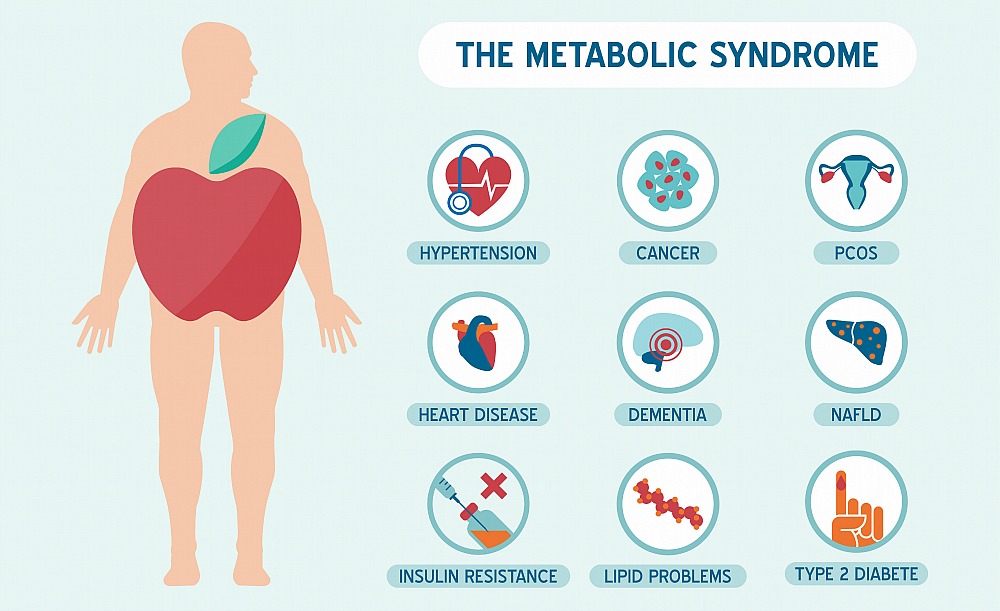








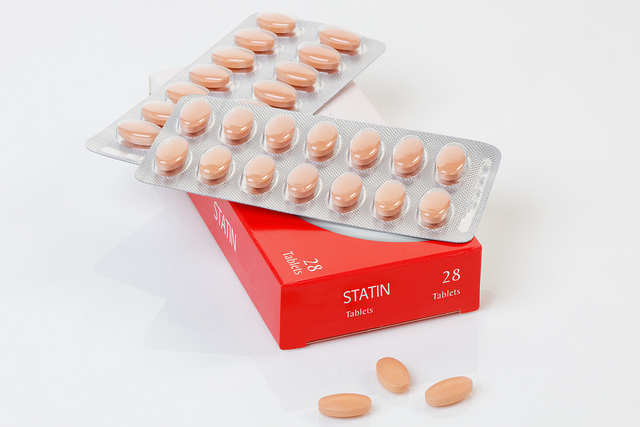
Could you suggest the best creamer to put in coffee? Thank you for your posting. It’s working!
Hi Monique – glad you are enjoying the posts! Personally, I find that of all the milk/cream substitutes, Oatmilk tastes good and is a great coffee “creamer”. I would avoid any of the processed forms of creamers (some contain canola oil or trans-fat), and even check the labels on the type of oat milk (or almond milk, other non-milk substitutes – as sometimes they contain other nasty processed foods.) I would say – that in the larger scheme of things – if you’re only have a little bit of coffee each day, I don’t believe that a small amount of milk in your coffee is really going to make a huge impact on your health. It’s the larger volume of everyday foods you eat each day, that is more useful to focus on changing. Reducing sugar, refined carbs, avoiding processed foods and trans fat, and most importantly – increasing the variety and number of antioxidants (aka vegetables) will all make a greater impact to your health.